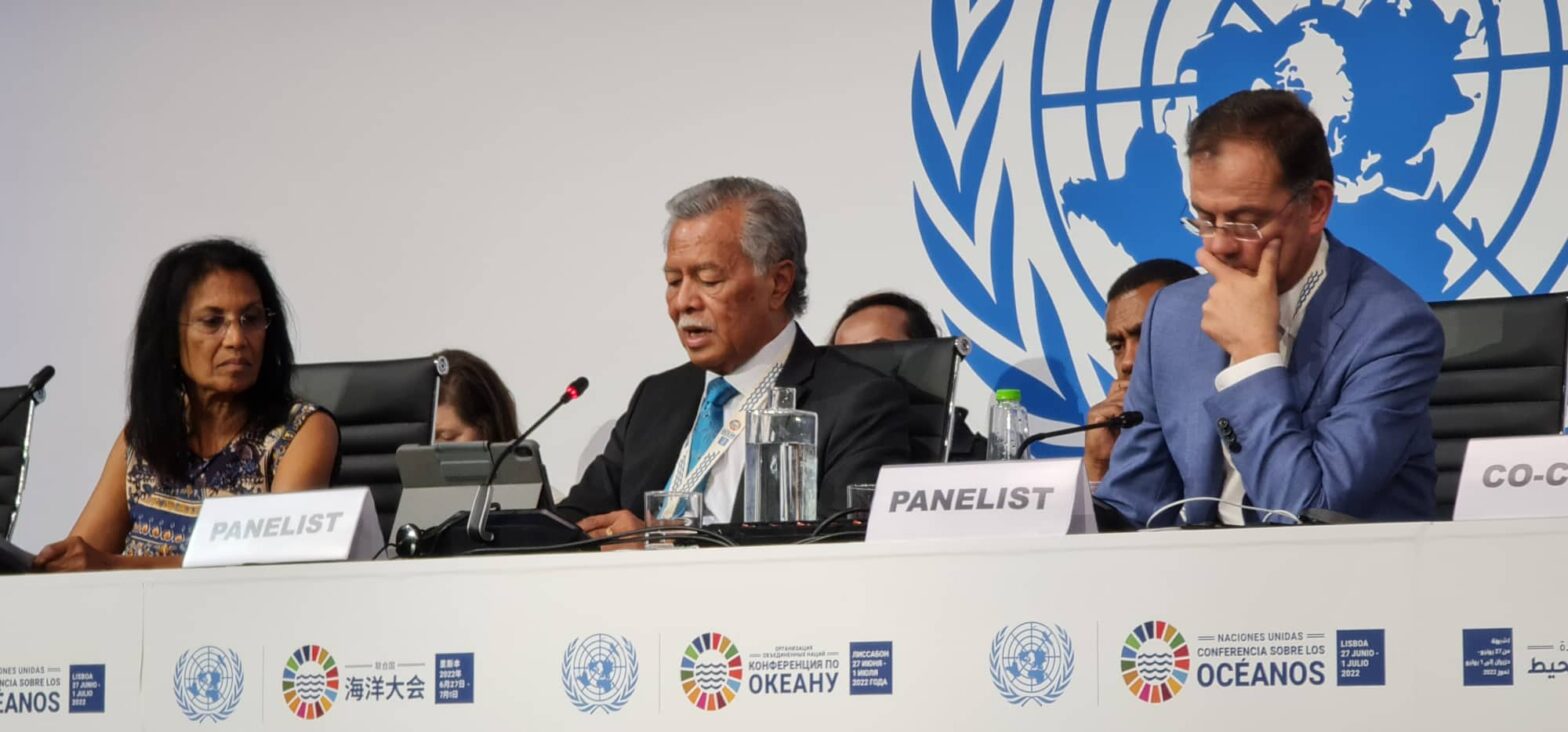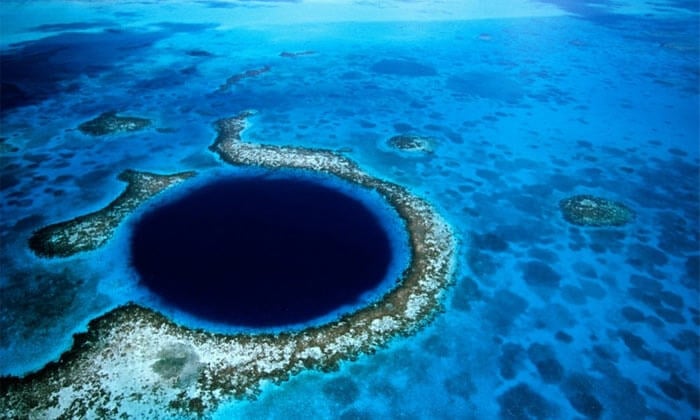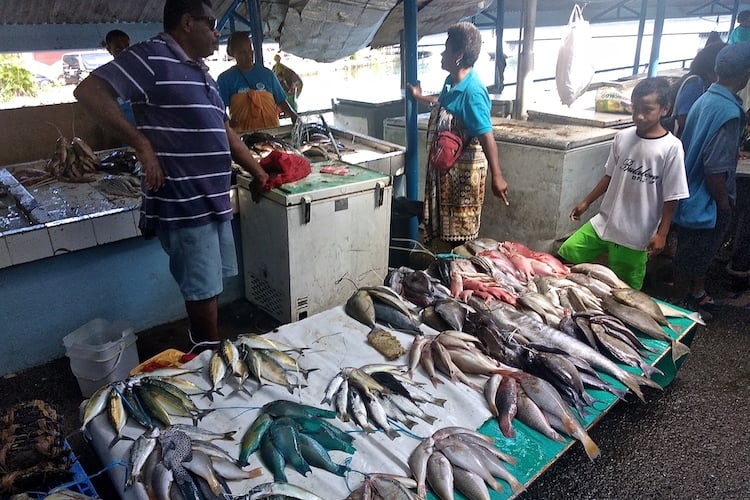Friends of the Mariana Trench co-founder is “asking the Biden administration to keep the Mariana Trench nomination on the list of the inventory of possible marine sanctuaries.”
Its mystery is a source of fascination for marine explorers, researchers and oceanographers. Filmmaker James Cameron was drawn into the Mariana Trench, located in the western Pacific Ocean about 124 miles east of the Northern Mariana Islands. In this deepest oceanic trench on Earth, several species were discovered in recent years.
The Mariana Trench has been nominated to be designated as a national marine sanctuary, a proposition that has stirred a community discussion.
The Western Pacific Regional Fishery Management Council does not oppose the nomination of the Mariana Trench as a marine sanctuary. What it simply wants is the Mariana Trench Marine National Monument management plan to take effect.
In 2016, CNMI Gov. Ralph Torres and CNMI Rep. Gregorio Kilili wrote to President Barack Obama to make the designation. To seek support, Sablan reached out to Friends of the Mariana Trench, which was co-founded by Angelo Villagomez, who is currently in Washington D.C. working at the Center for American Progress.
“With Ignacio Villagomez Cabrera, we worked together with a number of partners that included government officials, the local community and elected officials to submit a nomination. It’s like a job application. When applying for a job, you submit your application, and then you get an interview. If they like you after the interview, they offer you the job. All that we’ve done,” Villagomez said. “We submitted a nomination in 2016 and it was accepted and put on the inventory of possible sanctuaries.”
But nothing has happened since then. “The National Marine Sanctuary law says that something can be on the inventory for only five years. It’s now the five-year review of our nomination,” Villagomez said. “What we’re asking the Biden administration to do is to keep the nomination on the list of the inventory of possible marine sanctuaries.”
In December 2014, a new species of snailfish was discovered at a depth of 26,722 ft, breaking the previous record for the deepest living fish seen on video. During this expedition, several new species were filmed, including huge amphipods known as supergiants. In May 2017, an unidentified type of snailfish was filmed at a depth of 26,800 ft.
According to the National Marine Sanctuary Foundation, the designation is done by the National Oceanic and Atmospheric Administration or Congress under the National Marine Sanctuaries Act of 1972. It states that NOAA holds sanctuaries in trust for the American people and NOAA’s Office of National Marine Sanctuaries administers the management of each area in the National Marine Sanctuary System.
The National Marine Sanctuaries Act, the only federal law related to oceanic protection, authorizes NOAA to develop management plans, issue and enforce regulations for each sanctuary and the system as a whole.
Amy Vandehey, coordinator for WesPac Education & Outreach, said the council has not taken a position on any sanctuary. “The Mariana Trench is not a sanctuary,” she said. “There is a petition to designate the area a national marine sanctuary that is currently being reviewed.”
Vandehey said the council has not communicated any opposition because the sanctuary designation has not been officially proposed. “When this process begins, the council will be afforded the opportunity to provide fishing regulations that are consistent with the goals and objectives of the proposed sanctuary,” she added.
In 2009, President George W. Bush designated the Mariana Trench a national monument through a presidential proclamation, after which a Mariana Trench Marine National Monument management plan was established and WesPac’s participation was drafting fishing regulations.
“The council believes that the existing MTMNM management plan should be given a chance to be implemented as it may already provide the protection that the nomination is seeking. Many of the concerns listed in the proposed sanctuary nomination, including education, research, and economic development, can be addressed in the current MTMNM management plan and with existing partners,” Vandehey said.
“Fishery regulations for domestic fisheries are in place and foreign fishing is prohibited by law. If the primary concerns are regarding fisheries in the water column above the submerged lands or outside of the current MTMNM boundaries, existing management structures, including the council’s Mariana Archipelago Fishery Ecosystem Plan, are able to respond to those concerns,” Vandehey added.
In February, Kitty M. Simmonds, WesPac’s executive director, wrote to NOAA, stating that the establishment of the monument has greatly reduced the need for sanctuary protection. “The recent publishing of the MTMNM management plan should be given an opportunity to be implemented first to determine if there are any shortfalls or gaps in the management that could be addressed through the sanctuary nomination process.”
She said one of the proposals mentioned in the nomination criteria is the non-protection of the water column above submerged lands areas in the volcanic and trench units were expanded. “These waters are managed under the Magnuson-Stevens Fishery Conservation and Management Act’ through the Council’s Mariana Archipelago Fishery Ecosystem Plan.
Simmonds cited other proposals that are already under the jurisdiction of agencies and partners. This includes maritime heritage or special historical, cultural or archaeological sites not found in the water column above volcanic and trench units of the MTMNM that are already protected under the presidential proclamation that established MTMNM on 12 January 2009.
The area in the proposed claim that needs protection is a fluid mass of water, where several species do not permanently converge. WesPac supports the proposal to close off remote and inaccessible areas that do not provide potential economic and commercial use.
“In regards to management considerations, the areas in the proposal do provide enhanced opportunities for research, education and avoiding adverse impacts that could be provided by the establishment of a national marine sanctuary,” Simmons said. “These considerations are already addressed by the MTMNM and the management plan, including partnership opportunities, community-based support and management authority.”
According to NOAA’s website, each nomination is being reviewed based on the information submitted in the nomination package. No additional information will be included once the nomination package is submitted. This will be a qualitative analysis so NOAA will not be applying a numerical score to any nomination and nominations will not be judged against each other.
It also states that the strongest nominations will provide a clear connection and focus on the national significance criteria most relevant to the goal and intent for the nominated area, and provide as much information as possible for those national significance criteria. Nominations should provide information addressing all seven management considerations, with special emphasis on community-based support.
Villagomez said a lot of controversies has begun to circulate. “Some of the words have been taken out of context. Some people are spreading mistruths about the nomination,” he said. “The Friends of the Mariana Trench has been crystal clear that we are not proposing fishing restrictions and do not have any proposed borders,” he said.
“The perspective of the Friends of the Mariana Trench is that today, we still meet the criteria of a potential National Marine Sanctuary. We’re hopeful that it will remain on the inventory list,” he added.
WesPac and Friends of the Mariana Trench encourage the community to make their concerns and thoughts known in whether or not making the trench a national marine sanctuary is the best for them.
Simmonds in her letter urges the Office of National Marine Sanctuaries to include communities and agencies in Guam and the CNMI in the process. “These communities and administrations may be new to this process and would benefit from increased communication early on to avoid unnecessary issues,” she said.
On the other hand, Villagomez pointed out that if there will be a sanctuary designation in the future, it must comply with requirements. “And using this applying-for-a-job analogy, we are hoping to get that job interview and that’s kind of what’s going on right now.”
At the end of that process, if the people of the CNMI decide that they do not want a national marine sanctuary, Villagomez said, “that is fine and the Friends of the Mariana Trench will support that.”
This story was written by Bea Cabrera, originally published at Pacific Island Times on 16 May 2022, reposted via PACNEWS.




